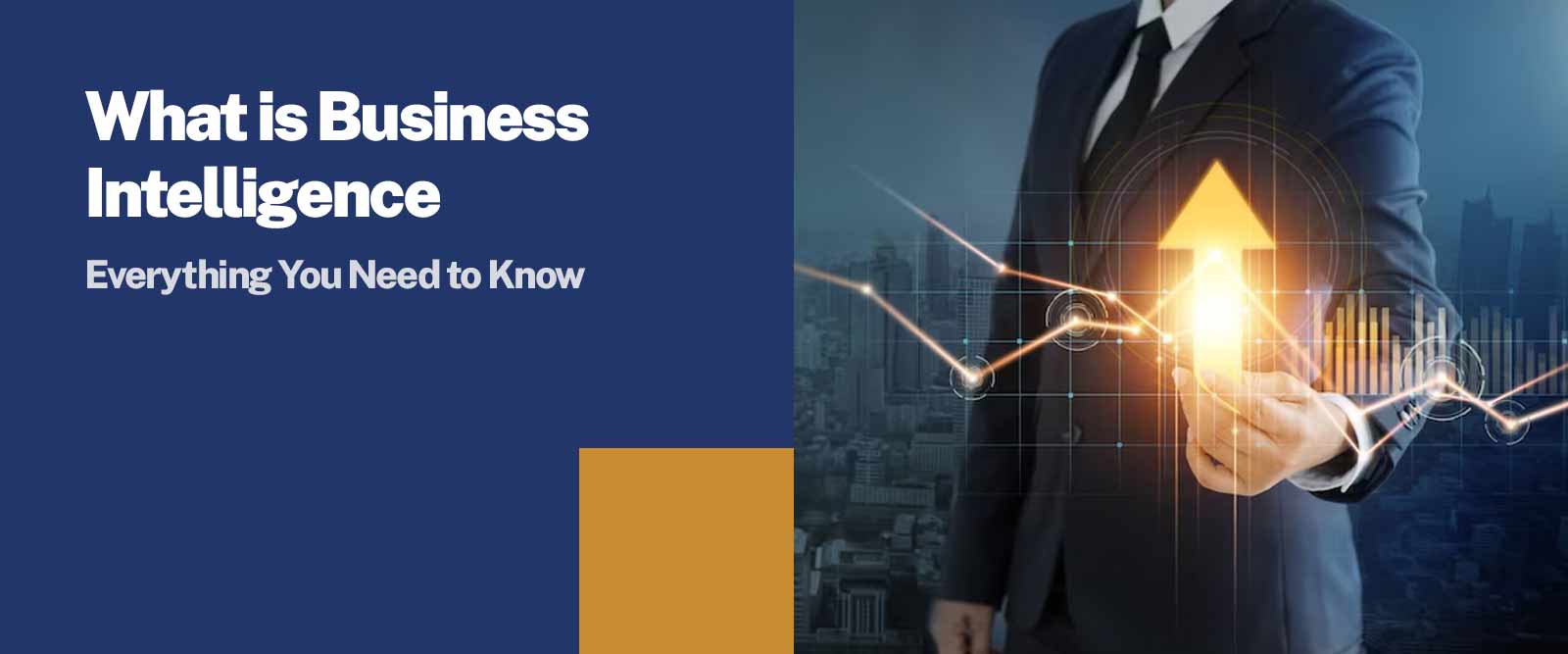5800 students unlocked their dream jobs with UG/PG programs in top colleges. Apply Now!
Business Intelligence Overview
In the age of competition, data is that precious metal that businesses need to unearth to be ahead of other competitors. To improve the decision-making processes and profit margins, Business Intelligence allows businesses to leverage data allowing operations to be better. If you want to study business intelligence, it would be great if you enrol in BBA in international business. There are many jobs after BBA that will help you to enter the field of Business Intelligence. Not just Business Intelligence's meaning but you’ll learn it in depth in the BBA program.
Now that you wish to learn all about business intelligence in detail, scroll down and see what we have covered in this blog.
What is Business Intelligence?
Often people ask - what do you mean by Business Intelligence? Well, Business intelligence, or BI, is the process of using software and other tools to look at and understand data so that businesses can make better decisions. Gain insight into business operations and performance, involves collecting, processing, and analyzing large amounts of data from a variety of sources, such as sales transactions, interactions with customers, and operational procedures.
To present complex data in a format that is simple to comprehend and use, Business Intelligence tools make use of data mining, statistical analysis, and visualization techniques. This makes it possible for business leaders to identify patterns, trends, and insights that can assist them in making decisions based on data to enhance their operations, boost efficiency, and gain a competitive edge.
In order to assist businesses in enhancing their performance, decreasing expenses, and increasing revenue, Business Intelligence is frequently utilized in areas such as finance, marketing, and operations. It is likewise progressively significant in the present computerized economy, where organizations need to make fast, information-driven choices to remain in front of their rivals.
How Business Intelligence Works?
To provide useful insights that can assist businesses in making decisions based on accurate information, business intelligence (BI) works by collecting, processing, and evaluating large amounts of data. An overview of Business Intelligence, in general, can be found here:
- Collection of Data: Sales transactions, interactions with customers, social media, website analytics, and a variety of other sources are all used by Business Intelligence tools to collect data.
- Integration of Data: After that, the data that has been gathered from various sources is combined and stored in a centralized location, such as a data warehouse, where it is simple to access and conduct analysis.
- Analyses of Data: To find patterns, trends, and insights in the data, Business Intelligence tools use algorithms from data mining, statistical analysis, and machine learning.
- Visualization of Data: In order to make it easier for users to comprehend and interpret the data, the outcomes of the data analysis are presented in a format that is appealing to the eye, such as dashboards, charts, and graphs.
- Making decisions: Using Business Intelligence insights, business leaders can make decisions based on data that can help their company run better, cut costs, and make more money.
The goal of business intelligence (BI) is to give businesses the tools and insights they need to make better decisions, boost performance, and gain an edge over competitors in their field.
Importance of Business Intelligence
Many reasons are there why business intelligence (BI) is important, including:
- Improved Decision-Making: Business Intelligence gives organizations important experiences and data that can assist pioneers with pursuing information-driven choices. Business Intelligence can assist in identifying trends, patterns, and anomalies that may not be apparent otherwise by analyzing large volumes of data. This enables businesses to make decisions that are based on hard data that are more informed.
- Enhanced Productivity: Business Intelligence can assist businesses in identifying operational inefficiencies and bottlenecks. Businesses can improve productivity and efficiency by streamlining operations and reducing waste through data analysis of processes and workflows.
- Customer Experience Enhancement: Businesses can gain insight into customer behaviour, preferences, and needs by analyzing customer data. Businesses may be able to tailor their products and services as a result of this, resulting in improved customer experiences and increased customer loyalty.
- The advantage over rivals: By assisting businesses in identifying market trends and opportunities, Business Intelligence can give them a competitive advantage. Businesses are able to identify areas in which they can differentiate themselves and gain a competitive edge by analyzing competitor data as well as data on the industry as a whole.
- Mitigation of Risk: Business Intelligence can assist businesses in identifying potential operations-related risks and threats. Businesses can create emergency plans and take proactive steps to reduce risks by analyzing data on market conditions, supply chain disruptions, and other factors.
Overall, Business Intelligence's ability to assist businesses in making better decisions, increasing efficiency, and gaining a competitive advantage in their sector is what makes it so significant.
Tools and Applications of Business Intelligence
Business intelligence (BI) tools and applications include the following:
- Dashboards: A single, simple-to-read visual representation of the data is provided by dashboards. They can show metrics, key performance indicators (KPIs), and other useful data to help businesses keep track of performance and spot trends.
- Tools for Reporting: Announcing devices permit organizations to make tweaked reports from numerous information sources. They are able to produce reports on a variety of business operations, including sales, marketing, and financial performance.
- Exploiting data: The process of finding patterns and insights in large datasets is known as data mining. Data mining algorithms are used by Business Intelligence tools to extract useful insights from complex data sets.
- Analytics with Prediction: Statistical models and machine learning algorithms are used in predictive analytics to look at past data and make predictions about what will happen in the future. Forecasting demand, anticipating trends, and identifying potential risks can all be aided by this.
- Visualization of Data: Businesses can present complex data in a way that is easy to understand using data visualization tools. Users can use their ability to create charts, graphs, and other visualizations to identify patterns and trends.
- Management of Business Performance: Tools for business performance management (BPM) assist businesses in monitoring and managing their performance concerning strategic objectives. They can assist organizations with setting targets, measuring progress, and changing systems on a case-by-case basis.
In general, Business Intelligence applications and tools are made to help businesses gain a competitive edge in their industry, optimize performance, and make well-informed decisions.
Difference Between Business Intelligence and Business Analytics
Here is a comparison table outlining the key differences between business intelligence (BI) and business analytics (BA):
|
Business Intelligence (BI) |
Business Analytics (BA) |
|
|
Definition |
A set of tools and techniques used to analyze and interpret data to help businesses make informed decisions. |
A more advanced form of Business Intelligence that uses predictive modelling, statistical analysis, and machine learning algorithms to identify patterns, forecast trends, and make future predictions. |
|
Focus |
Historical data analysis |
Predictive analysis |
|
Purpose |
To provide insights into past and current performance |
To help businesses forecast future trends and outcomes |
|
Data |
Structured and historical data |
Structured, unstructured, and real-time data |
|
Tools |
Dashboards, reporting, data mining, data visualization |
Predictive modelling, machine learning, statistical analysis |
|
Output |
Reports, KPIs, metrics, dashboards |
Predictions, forecasts, and prescriptive insights |
|
Use Cases |
Measuring performance, identifying trends, monitoring KPIs |
Predicting customer behaviour, forecasting demand, identifying new opportunities |
While BI and BA share some similarities, the key difference between the two is that Business Intelligence focuses on analyzing historical data to gain insights into past and current performance, while Business Analytics is more focused on predicting future trends and outcomes using more advanced analytical techniques.
Future Scope
As businesses increasingly rely on data-driven insights to make informed decisions, the scope of business intelligence (BI) in the future will be enormous. The following are some possible BI-related trends and developments:
- Machine Learning and AI: Business Intelligence devices will keep on integrating man-made consciousness (artificial intelligence) and AI (ML) calculations to empower quicker, more precise information investigation and prescient demonstrating.
- Analytics in real-time: In order to assist businesses in making decisions faster and more effectively, Business Intelligence tools will need to offer capabilities for real-time analytics in light of the growing volume and velocity of data.
- Cloud-based Business Intelligence: As companies try to cut costs, make their systems more scalable, and make them more accessible, cloud-based business intelligence (BI) solutions are likely to gain popularity.
- Business Intelligence by self-service: Users will be able to create reports, dashboards, and other data visualizations using self-service Business Intelligence tools, which will become increasingly common.
- Business Intelligence Mobile: Users will continue to use mobile Business Intelligence applications to access and analyze data while on the go.
- Information Administration and Security: To ensure compliance with regulations and safeguard sensitive information, businesses will need to implement robust data governance and privacy measures as the volume of data continues to grow.
As businesses seek to leverage the power of data-driven insights to gain a competitive advantage, the scope of Business Intelligence is likely to expand in the future.
Now let’s talk about the jobs and average salary that you can seek by understanding Business Intelligence.
|
Job Designation |
Average Salary (₹) |
|
Business Intelligence Analyst |
6-7 lakhs |
|
Business Intelligence Developer |
7-8 lakhs |
|
Data Analyst |
4-5 lakhs |
|
Data Scientist |
10-12 lakhs |
|
Business Intelligence Manager |
12-15 lakhs |
Conclusion
We hope that now you know what is Business Intelligence. Well, if you are interested in pursuing this field and want to get an in-depth knowledge of business operations, you should definitely opt for a BBA course from colleges powered by Sunstone. You get 70+ sessions from industry experts and IIM professionals along with 100+ job profiles to choose from. Not only that, you can build a professional portfolio of your work that will increase your chances of getting placed in a top company.
HELP
Take the first step towards your dream job.
ABOUT THE AUTHOR

